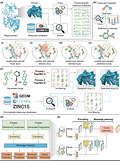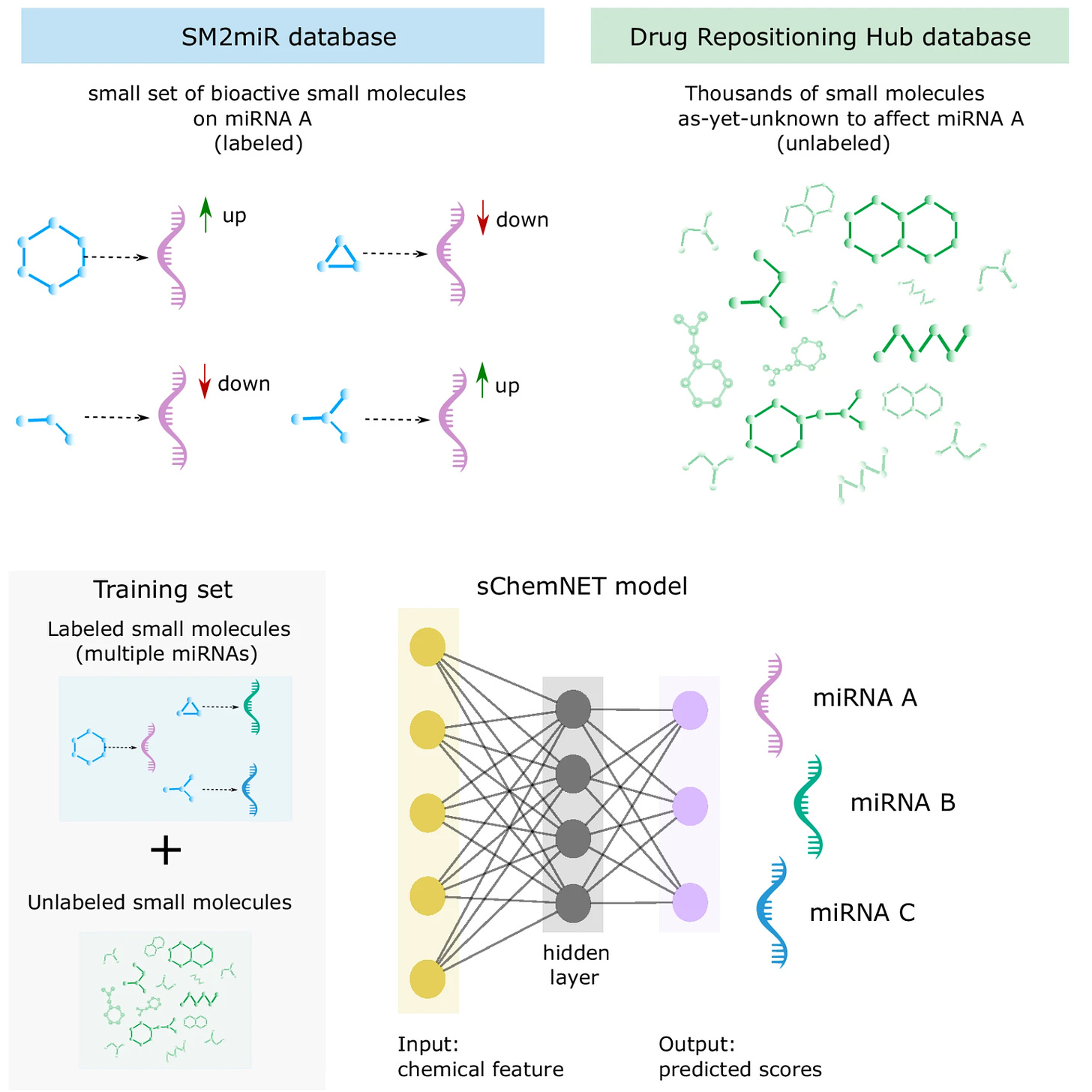In this issue:
Welcome back to your weekly dose of AI news for Life Science!
This week, we have some exciting new models lined up for you:
Dive into these game-changing innovations and explore how they are transforming the biotech and healthcare landscapes!
Rag2Mol: Structure-based drug design based on Retrieval Augmented Generation 🧬
Artificial intelligence (AI) has brought tremendous progress to drug discovery, yet identifying hit and lead compounds with optimal physicochemical and pharmacological properties remains a significant challenge. Structure-based drug design (SBDD) has emerged as a promising paradigm, but the inherent data biases and ignorance of synthetic accessibility render SBDD models disconnected from practical drug discovery. Introducing Rag2Mol, two models using retrieval-augmented generation (RAG) to design small molecules to fit a 3D pocket.
📌 Key Insights:
Rag2Mol comes in two flavours:
Rag2Mol-G consists of two models, a global retriever to retrieve small molecules from commercial databases that potentially bind to the pocket, and the molecular retriever is to rank and choose the best small molecule for drug design, based on a virtual screening and a docking model.
Rag2Mol-R: generates candidate molecules and then search for similar molecules in the public database (similarly to PocketCrafter, developed by Novartis)
The advantage of Rag2Mol, especially the Rag2Mol-R, is that the retrieved molecules have both potential interaction affinity and synthetic accessibility
Experimental results demonstrate that Rag2Mol methods consistently produce drug candidates with superior binding affinities and drug-likeness compared to other models (e.g. Pocket2Mol and TargetDiff).
sChemNET - Predict small molecules targeting microRNA 💊
MicroRNAs (miRNAs) have been implicated in human disorders, from cancers to infectious diseases. Targeting miRNAs or their target genes with small molecules offers opportunities to modulate disregulated cellular processes linked to diseases. Yet, predicting small molecules associated with miRNAs remains challenging due to the small size of small molecule-miRNA datasets. Introducing sChemNET, one of the first tool to predict how small molecules affect miRNA bioactivity and transcription!
📌 Key Insights:
Trained on ~2,400 “unlabelled” small molecules with a small number of “labeled” small molecules (i.e., known to affect miRNA expression levels or the expression of its targets)
sChemNET uses both chemical structure and sequence information and outperforms competitors by 6.18–24.67%, with experimental validation for the small molecules predicted to act on miR-451
A current limitation is that the tool only predicts whether a small molecule affects the transcriptional program of a miRNA, but can not pinpoint the exact molecular mechanism
DynamicPDB - Extension of Protein Data Bank 💿
Despite significant progress in static protein structure collection and prediction, the dynamic behaviour of proteins, one of their most vital characteristics, has been largely overlooked in prior research. Introducing DynamicPDB, an extension to the Protein Data Bank (PDB) which includes dynamic data and additional physical properties
📌 Key Insights:
Encompassing ~12.6K proteins (focus on GPCRs, kinases, proteases, TNF, …), all with molecular dynamics simulations to capture conformational changes.
The data unlocks better predictions for
Conformational states for protein-protein interactions (PPI)
Population shifts from mutations and ligand binding
Cryptic pockets & novel therapeutic modalities like PROTACs and molecular glues
MAISI - Synthetic Medical Imaging 🫁
One of the main the limitations for training models is data accessibility. There is never enough data. This year we have witnessed a lot of models and tools to generate data across different domains. Today we introduce MAISI, the latest tool from the Medical Open Network for Artificial Intelligence, a project started by NVIDIA and King's College London. MAISI can generate realistic large CT images accompanied by corresponding segmentation masks.
📌 Key Insights:
127+ different anatomies supported
Generating both CT and MRI scans with flexible volume size and voxel size
Large image generation - up to 512 × 512 × 768 size
Did you find this newsletter insightful? Share it with a colleague!
Subscribe Now to stay at the forefront of AI in Life Science.
Connect With Us
Have questions or suggestions? We'd love to hear from you!
📧 Email Us | 📲 Follow on LinkedIn | 🌐 Visit Our Website






